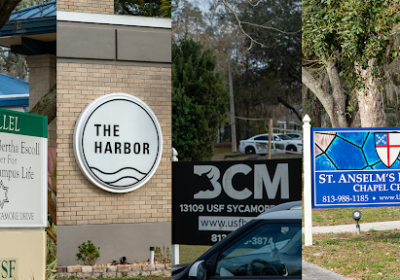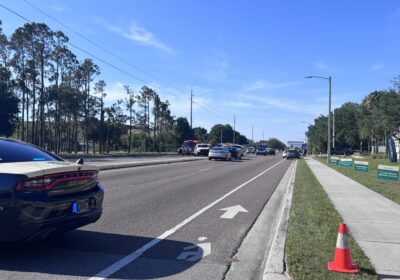Tampa prepares for new red-light cameras
When Catherine Haas, a senior majoring in social work, turned right on a red light at the intersection of 56th Street and Fowler Avenue during her freshman year, she said she didn’t think twice about it.
That was until her father called a few weeks later and told her she had received a ticket from a red-light camera at the intersection, she said.
“He told me it was for running a red light, and I was like, ‘I haven’t run any red lights,'” Haas said. “Then he said, ‘They have it on video and everything,’ and I was like, ‘Are you kidding?'”
Tampa Police assistant chief Marc Hamlin said the city looked at Hillsborough County intersections like these before deciding to install 18 new red-light cameras – despite criticisms and closures in other cities.
“That’s exactly what we did, and we heard the idea of red-light cameras going around the country and thought that would be a good way to proceed in the city of Tampa,” he said.
Hamlin said he is uncertain of when the cameras will be installed.
He said the locations were chosen by identifying the 20 intersections with the highest incidences of crashes. Two of them – Nebraska Avenue and Bruce B. Downs Boulevard – are on Fowler Avenue. Hillsborough Avenue and 40th Street was not pursued at the same time due to construction, but Hamlin said it is where the highest number of crashes occurred in the city. That area will soon be considered for red-light cameras.
Violators will be fined $158 after a 30-day trial period, and American Traffic Solutions (ATS) will provide the cameras.
Hamlin said the Tampa Police Department is purely “in the safety business” and believes red-light cameras would be the best way to reduce crashes from red-light running.
“You can’t monitor every intersection 24 hours a day, seven days a week with a police officer, but you can with a camera, and if people know cameras are up there, they won’t run the red lights,” he said.
Yet, two major cities have elected to get rid of their red-light camera systems within the last month. On Wednesday, Houston’s City Council voted to shut off its cameras due to citizen complaints, despite threatened legal action from ATS. The L.A. City Council voted unanimously to turn off its cameras July 31 after it was revealed paying the fines was voluntary under state law.
Etienne Pracht, associate professor of Health Policy and Management at USF, said the cameras raise additional concerns.
He said he published his updated study this year with professors Barbara Orban and John Large that reviewed previous red-light camera studies. He said the most scientifically rigorous studies showed an increase in injury crashes, such as rear-end collisions, at red-light camera intersections.
“When you look at the better studies out there, what you would find is that these cameras are kind of dangerous,” Pracht said. “They create accidents through rear-end collisions and whatnot.”
He said there are also legal disputes with the cameras, such as the lack of “same crime, same punishment” with red-light camera violation fines.
“Right now, I think one of the legal arguments that’s being made is that if you get pulled over for running a red light by a police officer, the ticket is different than if you get caught on those cameras,” Pracht said.
Haas said she remains uncertain about the public safety of the cameras.
“I feel mixed on it because if somebody knew there was a red-light camera there, they may be more cautious and that could prevent accidents,” she said. “But at the same time, if there was a cop sitting there, I don’t think I would’ve gotten pulled over. So I feel like it can be helpful, but at the same time, it can wrongfully target.”






